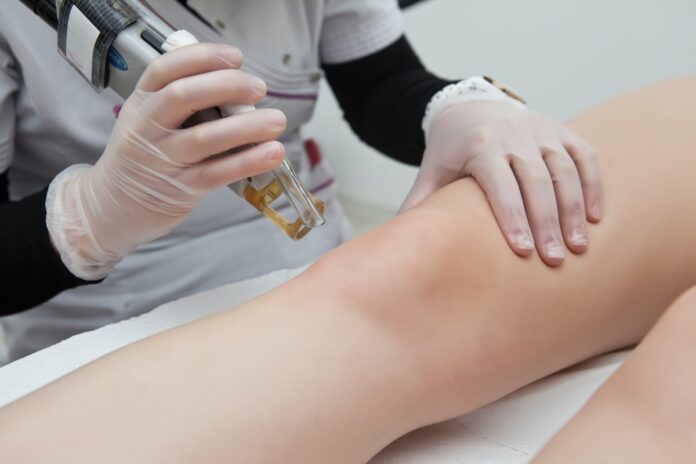Arthroscopy comes from two Greek words: “Arthros,” which means “joint,” and “Scope,” which means “to see.” So, to put it simply, arthroscopy is using a camera to look inside a person’s joint. All of a person’s joints are made in a way that makes it safe to put a 4 mm camera and other tools in certain places. This lets surgeons see what’s wrong and fix it. We can take the treatment from Shoulder Surgery in Jaipur and from Rheumatology & Arthritis Services in Jaipur.
The main difference between arthroscopy and open joint surgery is that in arthroscopy, the surgeon cuts through much less tissue to get to the joint than in open joint surgery. That means you will feel less pain and get better faster as a patient. Another benefit is that the arthroscope, which is our camera, magnifies the area we can see and lets us work with millimetre precision. With arthroscopy, doctors can now get to parts of the joint that couldn’t be reached with open surgery. Let’s learn more about this interesting type of surgery by looking at some Frequently Asked Questions (FAQs).
Arthroscopy can be used to treat what joints in the body?
Almost every joint. The knee arthroscopy and shoulder surgery make up most of the surgeries we do. This procedure can also be done on the elbow, ankle, wrist, and, just recently, the hip joint.
Is arthroscopy just for people who play sports?
No, it is just a coincidence that most injuries that need arthroscopy happen while people are playing sports. In fact, most of the surgeries we do are on non-athletes or occasional athletes who hurt themselves in a home or roadside accident.
What are the most common knee conditions that need arthroscopy?
Most knee arthroscopies are done on people who have hurt their knee ligaments. If you hurt your knee in an accident or while playing sports and feel like it is loose or unstable, arthroscopy may help. Some people have knees that lock up over and over again, which can be easily fixed with an arthroscopy. Arthoscopy is also used to fix dislocations of the kneecap these days.
What are some of the most common shoulder conditions that need arthroscopy?
Shoulder dislocations that happen over and over again are a common sports injury that can be treated very well with arthroscopy. Our elderly patients, especially diabetics, can get rotator cuff tears, which make it hard for them to lift their arms. Arthroscopy is also a good way to treat this. Another common problem for people with diabetes is frozen shoulder. The shoulder gets very stiff when this happens. If it doesn’t go away after taking the right medicines and doing physical therapy, arthroscopy is a good option.
Read also about the surgery to replace a shoulder.
What are some common diseases of the elbow, wrist, and ankle that need arthroscopy?
If medications and physical therapy don’t help treat tennis elbow, elbow arthroscopy can. Wrist arthroscopy can also be used to treat some wrist fractures and inflammations. Ankle arthroscopy can be used to treat chronic ankle pain caused by sprains, inflammation, and other things.
What are the most common hip conditions that need arthroscopy?
The hip joint is one of the most deep in the body. Hip arthroscopy can help people with hip pain, especially young people. Hip arthritis in its early stages can also be helped by reshaping the hip through an arthroscopy. This is a new and exciting field, and as more progress is made, more and more hip-related procedures are being added to the list.
How do people usually go about getting an arthroscopy?
A sports surgeon who has done a fellowship will look at you and decide if arthroscopy is right for you. Most of these kinds of surgeries are done as “day care” or “short stay” surgeries, in which you leave the hospital within 24 to 48 hours. For procedures on the lower limbs, spinal and epidural anaesthesia are used. For procedures on the upper limbs, general anaesthesia is preferred. Each surgery has a different recovery time, which is best talked about in person with the surgeon.
Are there any dangers I should know about?
Arthroscopy is a safe procedure that has been used for a long time. Joint pain, swelling, and stiffness are all normal and will go away with physiotherapy. Questions about anaesthesia are best talked about with our anesthesiologist after admission. Modern anaesthesia makes it very safe for anyone to go through with this procedure, and a panel of experts from different fields, like cardiologists and physiotherapists, makes sure that you are covered for anything that could go wrong during your stay in the hospital.
Is arthroscopy painful?
You won’t feel pain before, during, or after the procedure because of how well we handle pain. When you have an arthroscopy, you might feel some mild joint pain, which is easy to treat with simple anti-inflammatory.
So, if you feel like your knees are giving out, your shoulders are painful and stiff, or any other joint in your body is bothering you, come see us for an evaluation. Even though joint replacements are common these days, we still believe in our core philosophy: “Why replace when you can preserve?”







